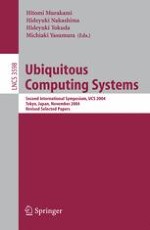This book is a collection of papers presented at UCS 2004, held on November 8–9 in Tokyo. UCS is a series of international symposia sponsored by the special interest group Ubiquitous Computing Systems of the Information Processing Society of Japan. The ?rst UCS was held on November 17, 2003 in Kyoto. It was held as an invitation-based symposium. UCS 2004 was the second of the series, and the ?rst submission-based conference. UCS focuses on the emerging researcharea of ubiquitous computing systems. This emergence is an outcome of the rapid evolution in smart appliances and devices, as well as tremendous advances in wireless networks and mobile c- puting.Inthelastfewyears,variousapplicationsofinformationtechnologyhave been changing our everyday life rapidly and to a large extent. The best ex- ple is the use of mobile phones. By getting new sensing devices, cameras, their application ?eld is no longer limited to communication but covers data c- munications including Internet access, and data and program up-/downloading, and so on. The symposium o?ered the opportunity for in-depth exploration of the most recent research and development ?ndings in the ?eld of ubiquitous computing. The submitted papers presented at UCS 2004 suggest such a direction to future technologies, including mobile ad hoc networks, sensor networks and conte- aware technologies.
